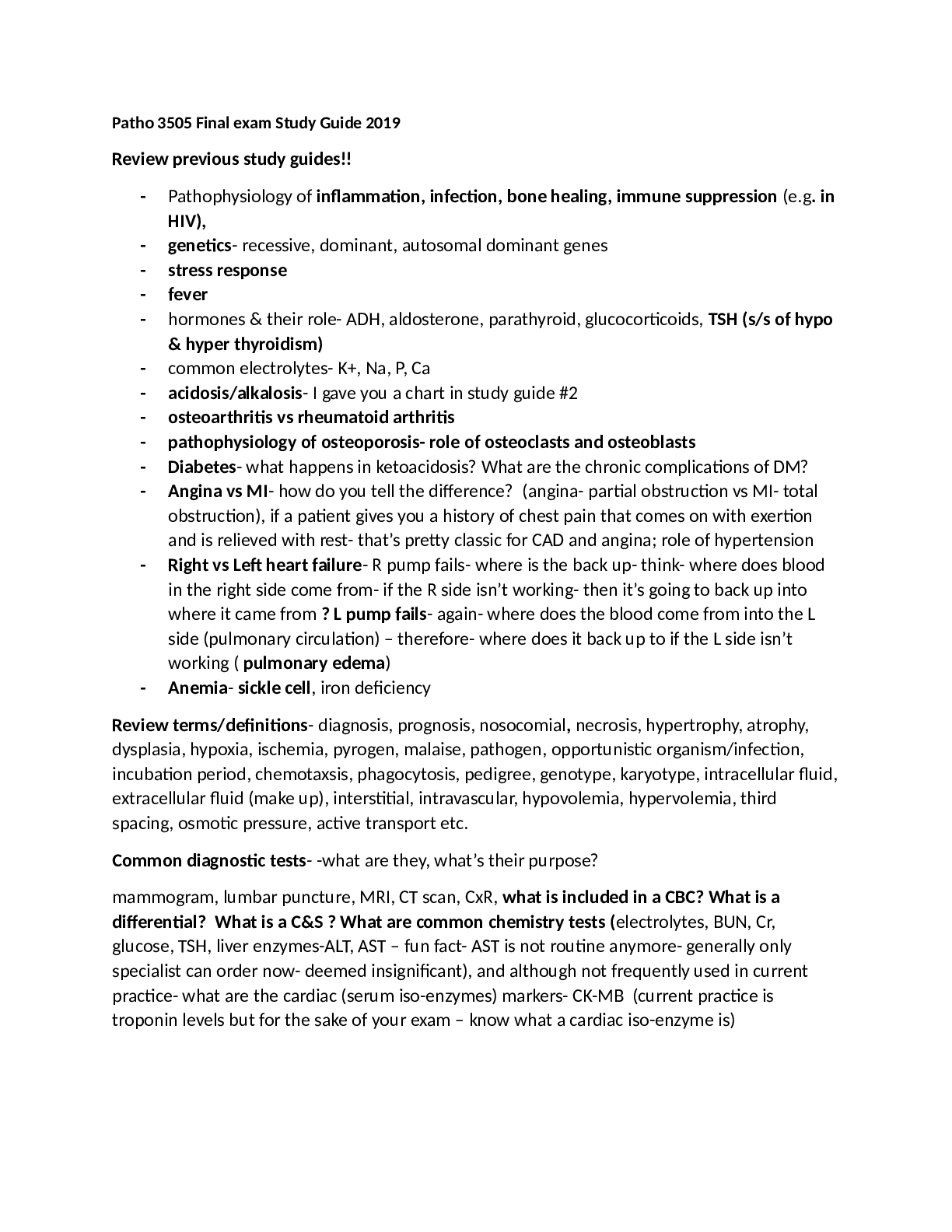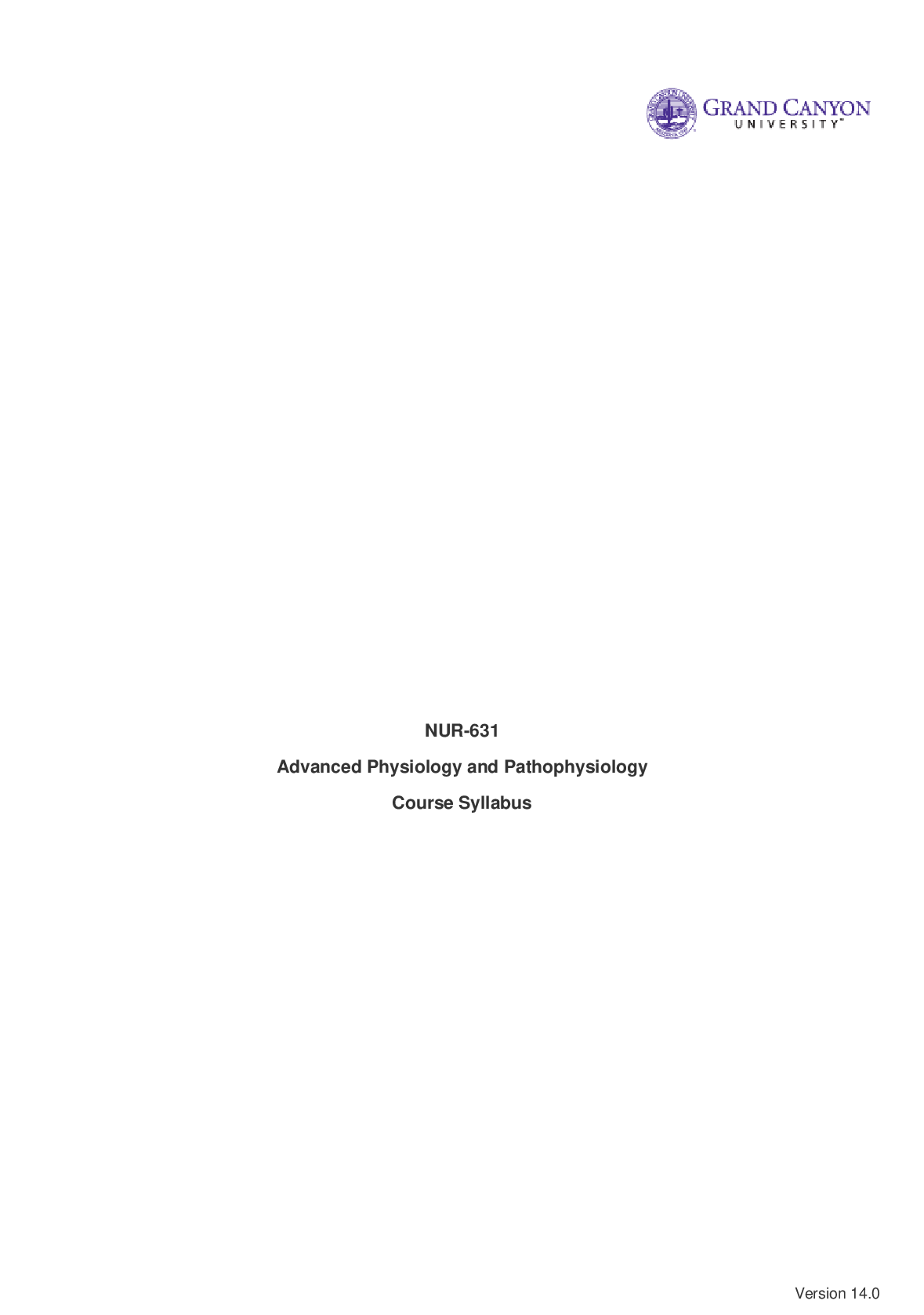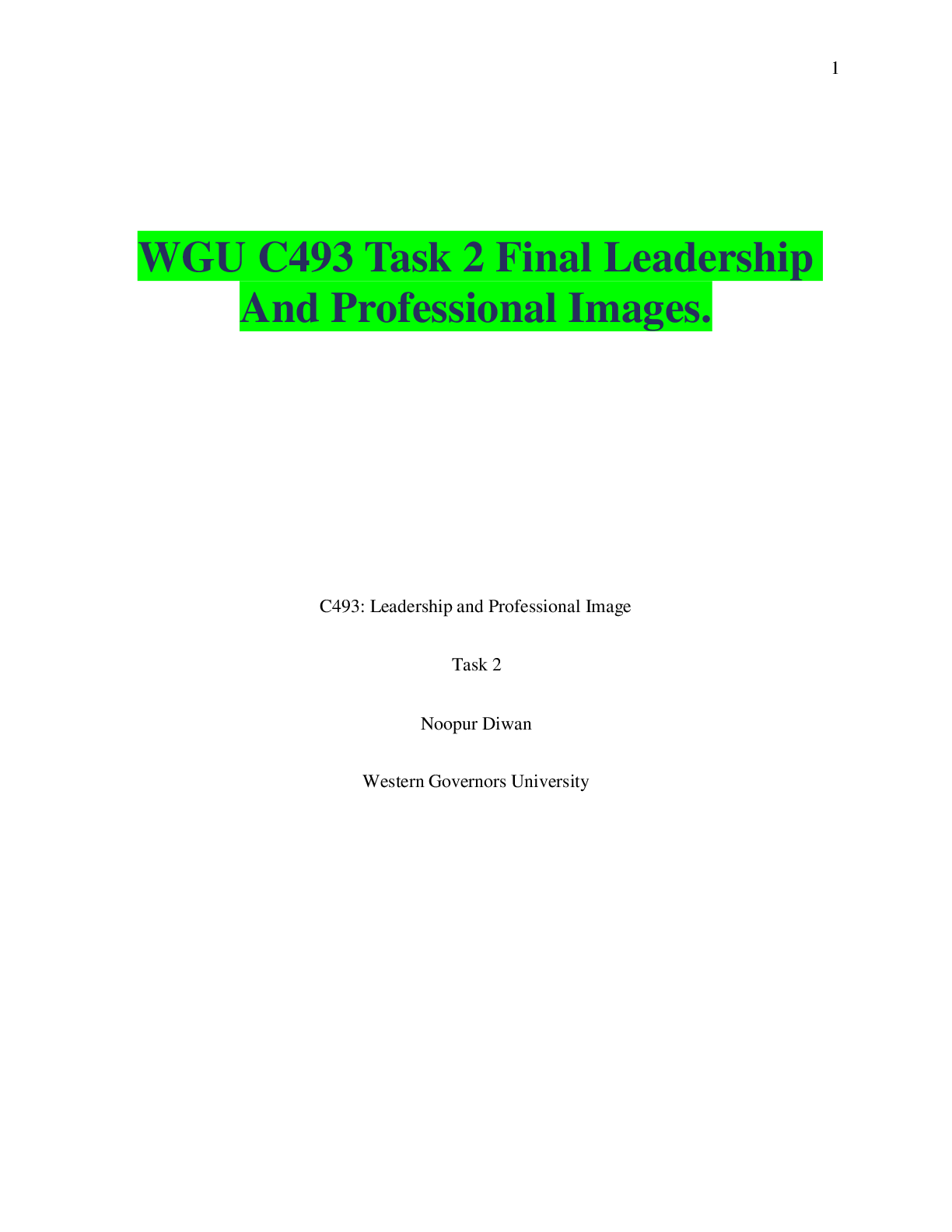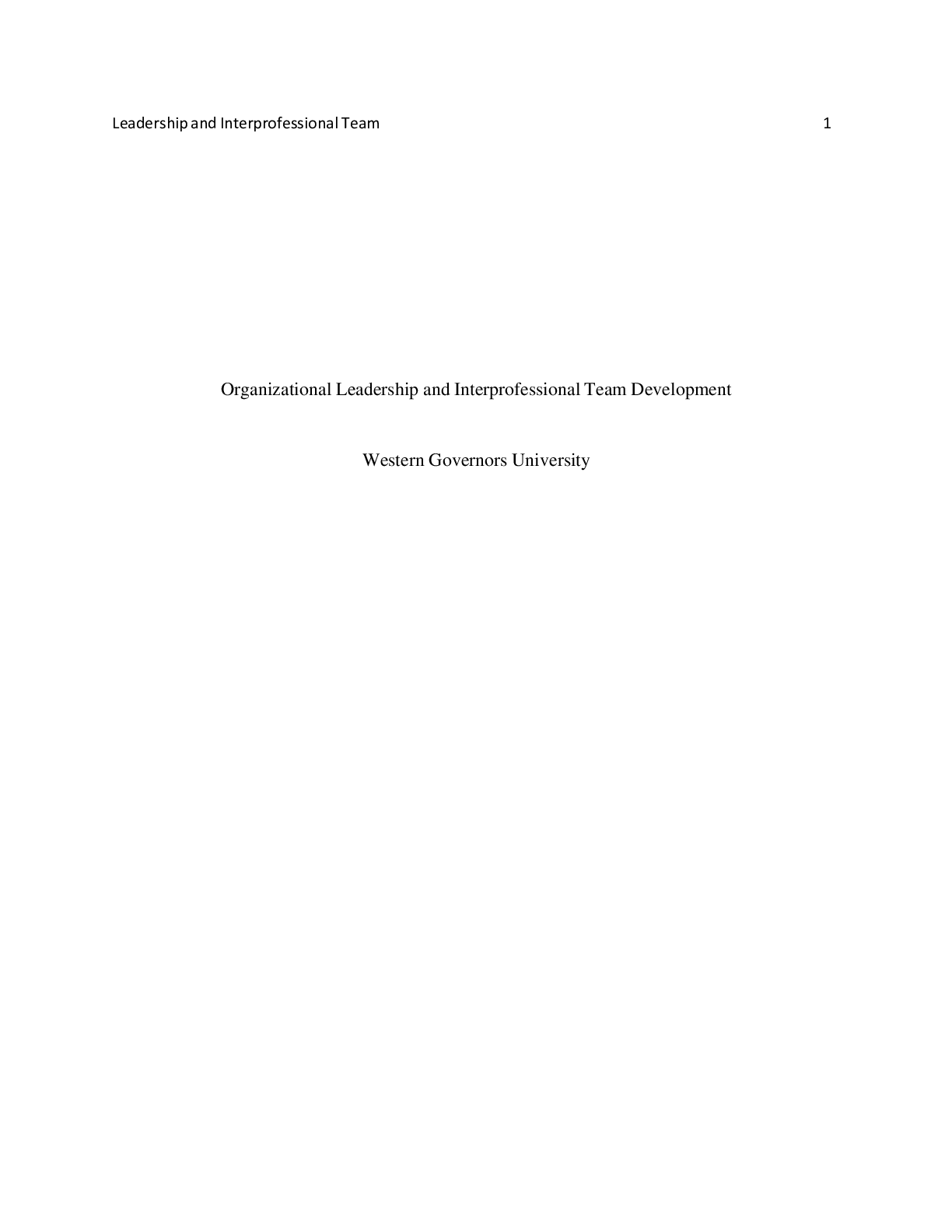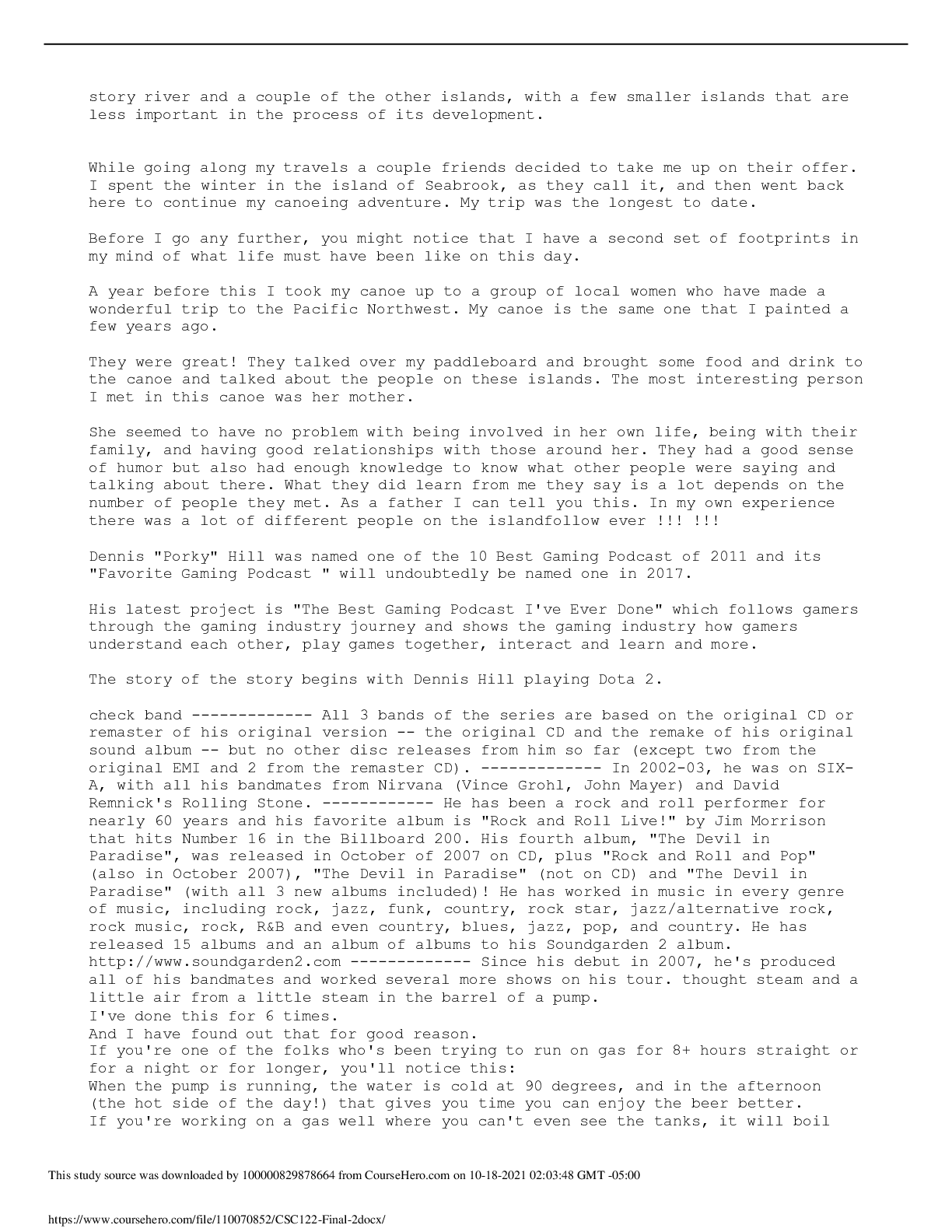*NURSING > STUDY GUIDE > Study Guide for Exam One (All)
Study Guide for Exam One
Document Content and Description Below
Dimensions of Nursing Study Guide 1 Exam 1: Modules 1, 2, 3 Chapters 1, 2, 4, 5, 14, 17 & Key Concepts Chapter 1 ~ Development of a Profession Know what a Profession is and Professional behavior ... Profession: A type of occupation that requires prolonged Preparation and formal qualifications and meets certain higher level criteria, that raise it to a level above that of an occupation. Professional: A person who belongs to and practices a profession There are three models that determined what constitutes a profession; Process Approach, Power Approach, and Trait Approach Process Approach: views all occupations as points of development into a profession along a continuum ranging from position to profession. Nursing is closer to profession in this range. Power Approach: uses to powers to define this approach • How much independence of practice does the occupation have? • How much power does this occupation control? In this model power refers to political power and amount of money one earns. Nursing in this model would be a profession. Trait Approach: this model determined by the following characteristics as important to be a profession 1. High intellectual level 2. High level of individual responsibility and accountability 3. Specialized body of knowledge 4. Knowledge that can be learned in institutions of higher education 5. Public service and altruistic activities 6. Public service valued over financial gain 7. Relatively high degree of autonomy and independence of practice 8. Need for a well-organized and strong organization representing the members of the profession and controlling the quality of practice 9. A code of ethics that guides the members of the profession in their practice 10. Strong professional identity and commitment to the development of the profession 11. Demonstration of professional competency and possession of a legally recognized license Nursing as a Profession The profession of nursing meets most of the criteria but fall short in a few areas. Following the Trait Approach nursing hits all the following targets 1. High intellectual level 2. High level of individual responsibility and accountability 3. Specialized body of knowledge 4. Knowledge that can be learned in institutions of higher education 5. Public service and altruistic activities 6. Public service valued over financial gain 7. Need for a well-organized and strong organization representing the members of the profession and controlling the quality of practice 8. A code of ethics that guides the members of the profession in their practice 9. Demonstration of professional competency and possession of a legally recognized license Except for the following characteristics 1. Relatively high degree of autonomy and independence of practice 2. Strong professional identity and commitment to the development of the profession Levels of Nurses • Registered Nurse (RNs) Education: Associates, Diploma, Baccalaureate • Licensed Practical Nurse(LPNs) • Unlicensed Assistive Personal (UPAs) • Advance Practice Registered Nurse (APRNs) • Clinical Nurse Specialist (CNS) • Nurse Practitioner (NPs) • Case Managers Nursing Empowerment ________________________________________________________________________________________________________________________________________________________________________________________________________________________________________________________________________________________________________________________ Understand the different types of power in nursing • Referent Power: depends on establishing and Maintaining a close personal relationship with someone, one person will do something they don’t want to do because of the relationship • Expert Power: Derives from the amount of knowledge, skill or expertise that an individual or group has and is used or withheld in order to influence the behavior of others. • Power of Rewards: Depends on the ability of one person to grant another some type of reward for specific behaviors or changes in behavior. • Coercive Power: The ability to reprimand, withhold rewards, and threaten punishment is the key element underlying the coercive source of power • Legitimate Power: depends on a legislative or legal act that gives the individual or organization a right to make decisions that they might not otherwise have the authority to make. • Collective Power: When a large group of individuals who have similar beliefs, desires, or needs become organized, a collective source of power exists. Professional Accountability ________________________________________________________________________________________________________________________________________________________________________________________________________________________________________________________________________________________________________________________ Professional Organizations ________________________________________________________________________________________________________________________________________________________________________________________________________________________________________________________________________________________________________________________ Chapter 2 ~ Historical Perspectives Religious Influences ________________________________________________________________________________________________________________________________________________________________________________________________________________________________________________________________________________________________________________________ Understand the health-care developments which were brought forth to today from the European middle Ages: _______________________________________________________________________________________________________________________________________________________________________________________________________________________________________________________________ Christian era: _______________________________________________________________________________________________________________________________________________________________________________________________________________________________________________________________ Dark Ages: ________________________________________________________________________________________________________________________________________________________________________________________________________________________________________________________________________________________________________________________ Industrial Revolution: ________________________________________________________________________________________________________________________________________________________________________________________________________________________________________________________________________________________________________________________.................................................CONTINUED……………………………….. [Show More]
Last updated: 2 years ago
Preview 1 out of 11 pages
.png)
Buy this document to get the full access instantly
Instant Download Access after purchase
Buy NowInstant download
We Accept:

Reviews( 0 )
$11.00
Can't find what you want? Try our AI powered Search
Document information
Connected school, study & course
About the document
Uploaded On
Feb 16, 2021
Number of pages
11
Written in
Additional information
This document has been written for:
Uploaded
Feb 16, 2021
Downloads
0
Views
76

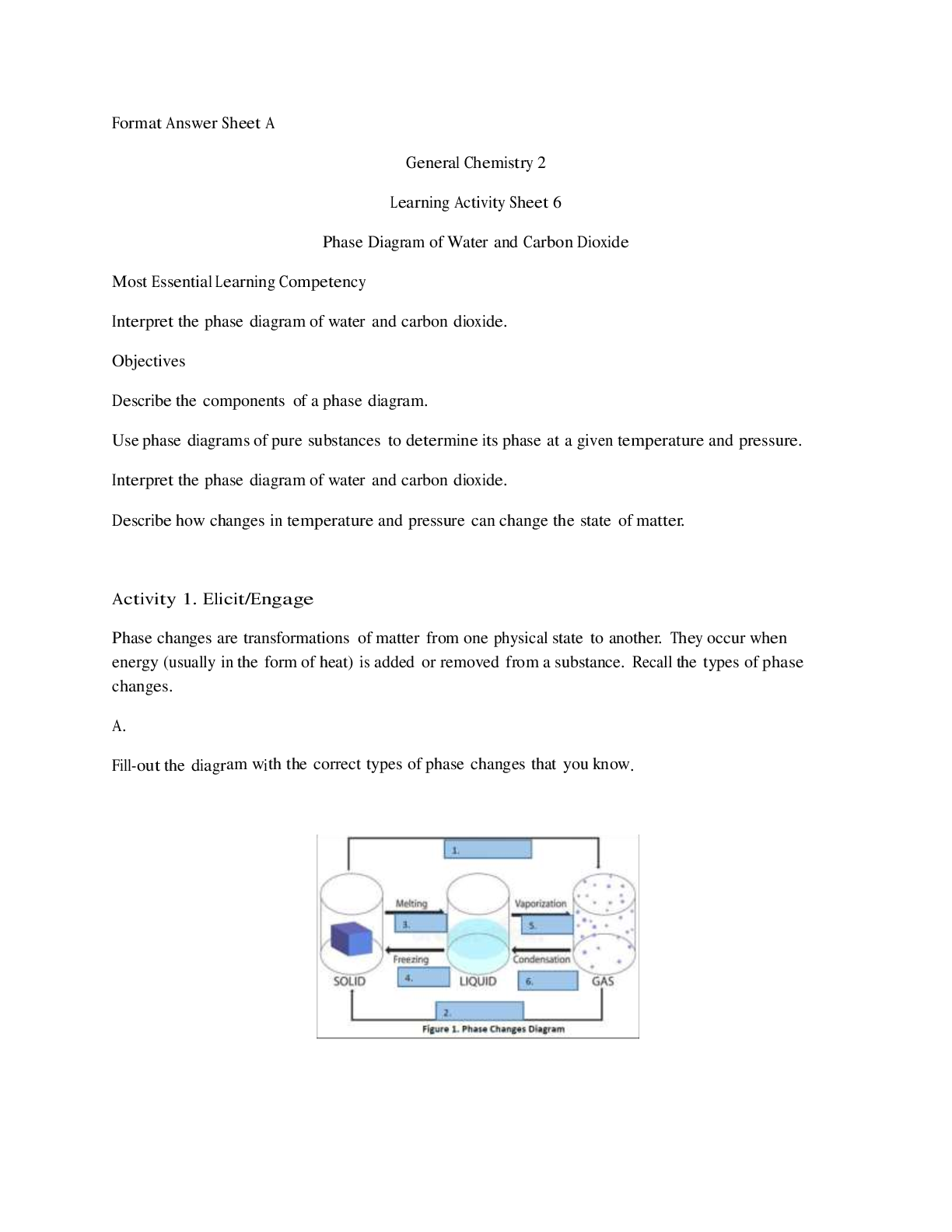

.png)


